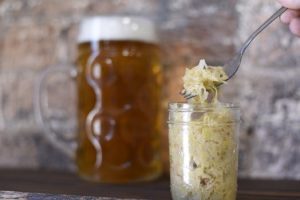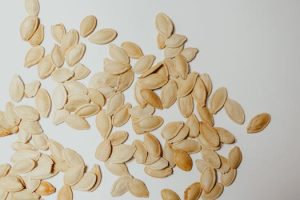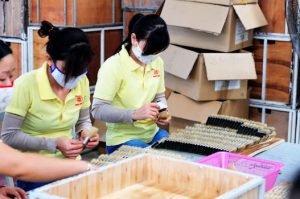Fungal Ingredients: Mycelium-Based Flavors and Textures
Fungi have been an essential part of our ecosystem for millions of years. In recent years, they have also become a vital component in the food industry. With the rise in popularity of plant-based diets and sustainable food production, fungal ingredients have gained significant attention. In particular, mycelium-based flavors and textures have emerged as a game-changer in the food market. The use of mycelium offers a host of new possibilities for chefs and food manufacturers, making it an exciting time for fungi in the food world. Let’s take a closer look at fungal ingredients and explore the potential of mycelium-based flavors and textures.
The Rise of Fungal Ingredients
Fungi, including yeast and mushrooms, have been used in food and beverage production for centuries. However, their role was limited to baking, brewing, and flavoring. In recent years, there has been a revolutionary shift in the way we view fungi as a food source. The world has become more aware of the environmental impacts of meat and dairy consumption, leading to a rise in plant-based diets. Fungi have become a viable substitute for animal proteins, particularly in the form of mycelium-based products. So, what exactly is mycelium, and how is it transforming the food industry?
Understanding Mycelium
Mycelium is the vegetative part of a fungus, consisting of a network of fine, branching threads called hyphae. It is the underground part of mushrooms and plays a crucial role in decomposing organic matter, making it a vital component in the soil ecosystem. Mycelium is also an excellent source of protein, fiber, and antioxidants, making it an ideal ingredient for food production. Mycelium can be grown in a controlled environment, allowing for sustainable and efficient mass production. This cultivation process is known as mycotourism, and it has taken the food industry by storm.
Mycelium-Based Flavors and Textures
The most significant advantage of using mycelium in food production is its versatility. Mycelium can be used to create a wide range of flavors and textures, making it a popular choice for chefs and food manufacturers. The taste and texture of mycelium-based products can be customized to mimic meat, dairy, and even seafood. This versatility has paved the way for plant-based alternatives that are more appealing to consumers. Mycelium-based cheeses, burgers, and even salmon have already hit the market, providing consumers with delicious and sustainable options.
The Benefits of Mycelium-Based Flavors and Textures
Mycelium-based products offer several benefits that traditional animal-based products lack. For starters, they are environmentally friendly. Mycelium cultivation requires less land, water, and energy compared to traditional farming methods, making it an ideal solution for sustainable food production. Additionally, mycelium is a complete protein source, meaning it contains all nine essential amino acids that the body cannot produce on its own. It is also a good source of fiber and antioxidants, making it a vital component in a healthy diet.
The Future of Fungal Ingredients
The use of mycelium-based flavors and textures marks a significant shift in the food industry. It is a step towards more sustainable and ethical food production, without compromising on taste and nutrition. With advancements in technology and innovation, the potential of fungal ingredients is limitless. Mycelium-based products are expected to continue to disrupt the food market and pave the way for a more environmentally conscious future.
Final Thoughts
Fungi, with its mycelium-based flavors and textures, have proven to be a valuable addition to the food industry. From providing sustainable alternatives to meat and dairy to offering a myriad of health benefits, mycelium has established itself as a powerhouse ingredient. As consumers become more aware of their food choices and the environmental impact of their diets, the demand for mycelium-based products is only set to increase. It is an exciting time for fungi in the food world, and the future is looking brighter than ever.











